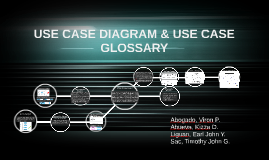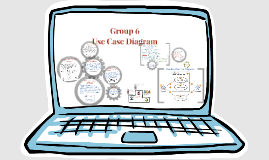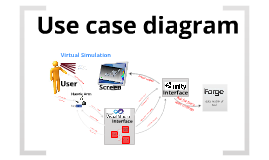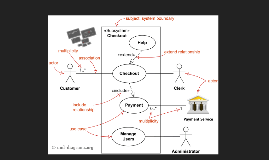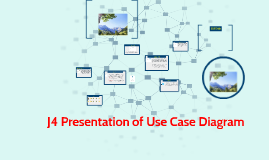Use Case Diagram
Transcript: 1. Include Include is a Directed Relationship between two use cases, implying that the behavior of the included use case is inserted into the behavior of the including use case. When a use case is depicted as using the functionality of another use case in a diagram, this relationship between the use cases is named as an include relationship. An include relationship is depicted with a directed arrow having a dotted shaft. The tip of the arrowhead points to the child use case and the parent use case is connected at the base of the arrow. A key here is that the included use case cannot stand alone. The stereotype "<<include>>" identifies the relationship as an include relationship. 2. Extend This relationship specifies that the behavior of a use case may be extended by the behavior of another (usually supplementary) use case. The extension takes place at one or more specific extension points defined in the extended use case. In an extend relationship between two use cases, the child use case adds to the existing functionality and characteristics of the parent use case. An extend relationship is depicted with a directed arrow having a dotted shaft, similar to the include relationship. The tip of the arrowhead points to the parent use case and the child use case is connected at the base of the arrow. The stereotype "<<extend>>" identifies the relationship as an extend relationship. 3. Generalization A generalization relationship is also a parent-child relationship between use cases. The child use case in the generalization relationship has the underlying business process meaning, but is an enhancement of the parent use case. In a use case diagram, generalization is shown as a directed arrow with a triangle arrowhead. The child use case is connected at the base of the arrow. The tip of the arrow is connected to the parent use case. • First, name your system. Draw a rectangular shape. Benefits of Use Case Lastly, for other actors repeat steps 2 to 4. Actor Definition These diagrams are yet another way the use case approach differs from traditional methods of gathering requirements. The use case diagram is a roadmap, a high-level view of the requirements that exist in the system. No other approach to gathering requirements has this element. Benefits of Use Case End of Our Report Use case diagrams make requirements more approachable and understandable by allowing someone to quickly visualize what the system needs to do. They allow you to brainstorm at a whiteboard as you decide what major functions your system needs to perform. In short, use case diagrams make it easier to communicate your requirements. Association Then, connect those use cases with the association symbol to the actor. To show the interaction and relationship between the actor and use case. Benefits of Use Case Elements of Use Case Use cases focus on the users of the system, not the system itself, thus the real system needs are brought to light early on. • Your system (4) is whatever you are developing. It might be a small software component, whose actors are just other software components; or it might be a complete application; or it might be a large distributed suite of applications deployed over many computers and devices. Benefits of Use Case Thank You and God bless!!! Third, identify what goals that the actor will have to interact with the system. That goal becomes the use case. Use cases are represented by spherical shape symbol. Elements of Use Case Second, identify an actor who wants to interact with the system. Draw a stick figure that represents the actor and name it. A subject describes a business system that has one or more business use cases attached to it. A subject is represented by a rectangle that surrounds attached business use cases and is tagged with a name: It adds value because they explain how the system should behave and in the process, they also help brainstorm what could go wrong. Depending on how in depth and complex you want or need to get, use cases describe a combination of the following elements: • A use case (2) represents the actions that are performed by one or more actors in the pursuit of a particular goal. Example use cases are Order Meal, Update Menu, Process Payment. On a use case diagram, use cases are associated (3) with the actors that perform them. Elements of a Use Case Diagram An association is the relationship between an actor and a business use case. It indicates that an actor can use a certain functionality of the business system—the business use case: Use case modeling is also describes all of the things that might go wrong. Provide a list of goals and this list can be used to establish the cost and complexity of the system and project teams can then negotiate which functions become requirements and are built. What Use Cases Include Reading Use Case Diagrams A use case diagram is a diagram that is written using the use case method. This diagram shows in the simplest form the graphical representation






